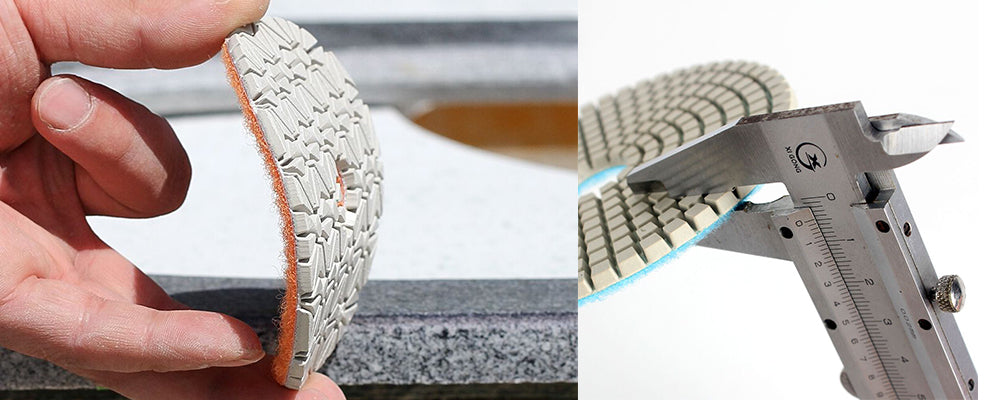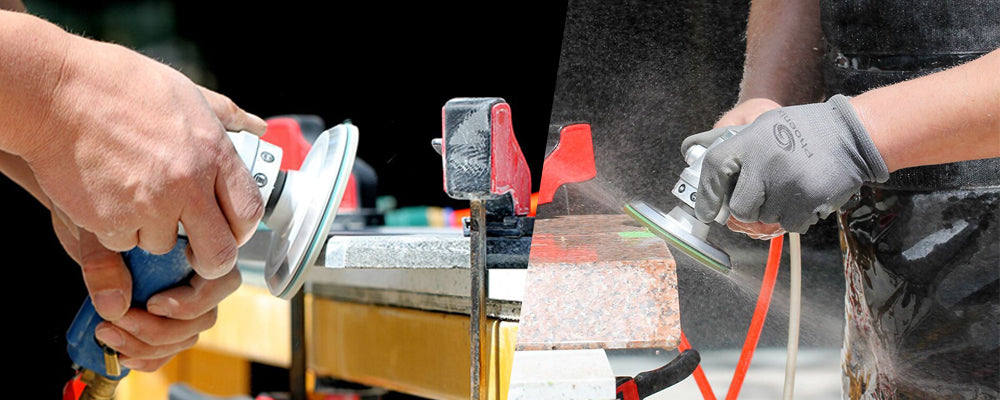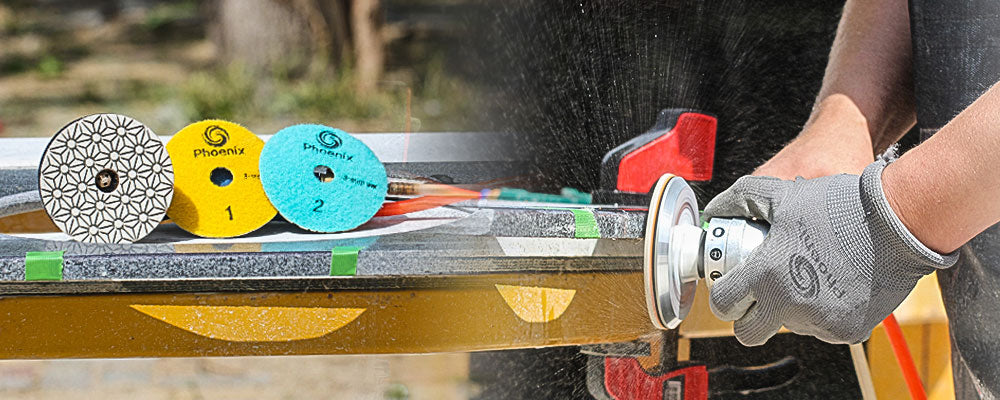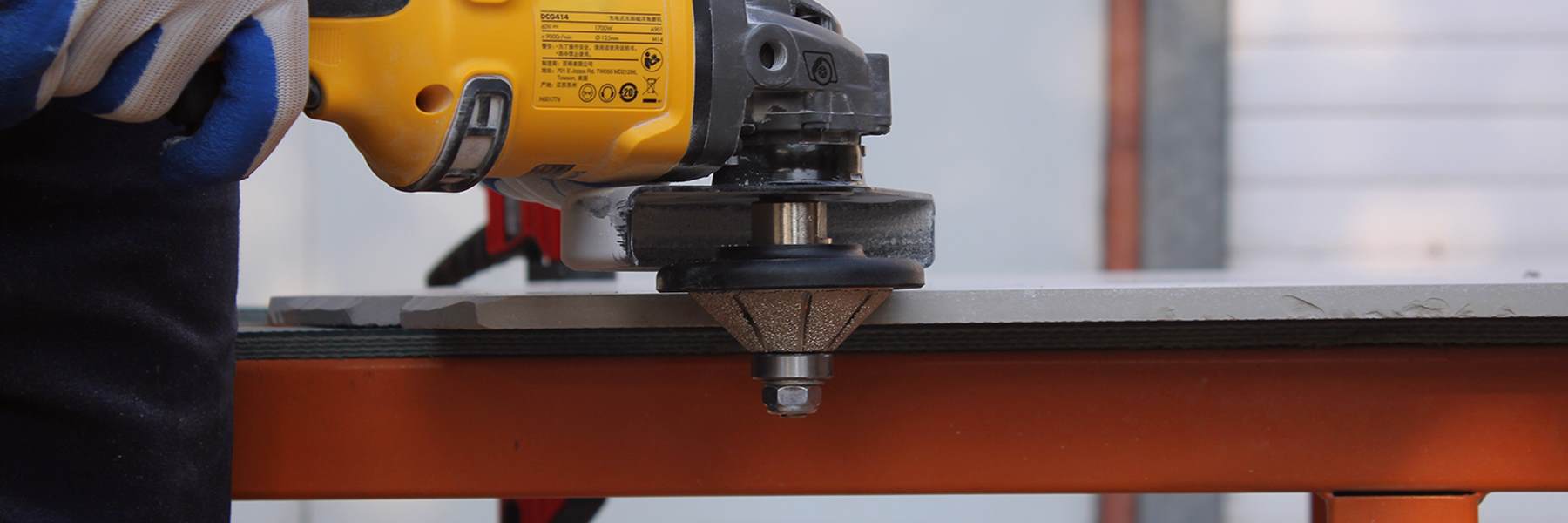The tips will be given from several aspects; I’m gonna list them down here so you can choose to read or slip any of them as you want.
-
System introduction (why they are expensive; why the expensive ones not working on everything)
-
Tips on selection:
- Pads for material(material character and color)
- Pad size
- Pad thickness and flexibility
- Use wet or dry
- How many steps you want
- Special requirements
Introduction:
Before we know how to pick pads, let’s talk about what they are made and the way they work. The polishing pads(or discs), as you can discern from the name, are designed mainly for polish, but can also be used for stock removal and sometimes rough grinding. Different in the matrix pattern, they are mostly made with diamonds particles in combination with resin bond, which render them certain aggressiveness during polishing without hurting the materials gravely. It is the inside diamond quality that decides the price. As you can imagine, those high quality diamonds with multiple angles and special internal shape will be easily broken and continuously expose new angles during polishing so that the product’s life can be elongated. But I’m not suggesting you fork out a hundred bucks for such thing while your needs can be met by something much wallet-friendlier—we’ll talk about it later. With hook and loop backing, the pads can be easily attached to and removed from grinders or polishers, which can give them high speed to work. Just for your information, stone polishing can be affected by various factors, like stone color and quality. Not all pads work on all stones, don’t forget that. Now, let’s come into tips’ part!
Tips on selection:
1. Know your materials
To select a polishing pad, we should firstly know more about our materials. Not all pads work on all stones, with this repetition please always bear in mind-- it is a point of great significance after all. Common materials mainly consist of granite, marble, quartz, porcelain, ceramic, engineered stones, all varying in colors and texture from each other; using pads in disregard of specific material conditions will gravely affect their lives, which may lead to your extra expenditure that should have been unnecessary. In addition, pads’ color is also a factor to consider with, as dark resin bond may bleed or leave mark on light stones.
Tip 1 Choose pads that work well on your materials. For example, pads for granite are usually too aggressive for soft stones like marble, while marble pads can hardly give effect on granite.

Tip 2 Choose pads that have the same color as your materials: dark for dark and light for light.
P.S. Feel bothered to distinguish them? Totally fine! We got this system that works on almost everything!
2. Select a pad with right size
Generally speaking, 4-inch pads are used most regularly, but on market 3-inch, 5-inch, 6-inch and 7-inch pads are also available. As you can imagine, the size of pads affects mainly on their stability: big-sized pads(like 7” diameter pads) can give extraordinary performance on flat and large areas, but the stability can be hugely decreased on a narrow material; plus, big pads are not recommended on polishing vertical edges of stones. On the contrary, small size pads like 3” or 4” ones are perfectly compatible with polish work on edges and narrow areas, while can become a real headache when dealing with large areas with the liability to gouge and the shortage of stability.

Tips Small pads for narrow areas, big pads for larger places;
P.S. 5” diameter pads, the medium system, is generally suit for all round use.
3. Consider thickness and flexibility
Generally speaking, the thickness of pads is closely relate to their life and flexibility. Thicker pads last longer but are less flexible, and its stiffness can always result in cupping when drying up. In the contrary, thinner pads are flexible enough to polish corners, curves and inner sink edges, but are easily worn out so can not last long. On market besides the common 3 millimeter pads, there are also 2 millimeter pads and 4 millimeter pads available. Be sure to trade off the two factors when picking your own pads.
Tips Thicker pads for longer use; thinner pads for flexible polish.

4. Use wet or dry
Using dry or wet is a matter of whether water added in the polishing progress. As you can imagine, polishing with water can reduce wearing of pads and give a longer duration. But your polish environment may not always allow the existence of water, in which cases dry pads would be the only option. Raizi Tool got wet-use-only pads, dry-use-only pads, and both-use-available pads. So, judge from your own conditions and make your own choices. And do bear in mind that pads may wear quickly if used wrongly.

5. The more steps the better?
Without any doubt, the more steps you take in process, the finer polish you would get; but in the contrast, the time consumption would correspondingly increase. Take edge polish for example: if you want to polish the four edges of your kitchen’s worktop, considering changing pads for six times, processing with each pad for, let’s say, three to four minutes on each edge, it would take you almost 90 minutes in total to deal with these “side issues” that no body would even notice. Shocked at this already? We have already spared your possible letups for tiredness and boredom! Therefore, under the likes of such circumstances where no highest quality polish is required, the better option for you would be 3 or 4 step system, which can save more than half of your time and labor than using the 7 step one. However, the story would be totally different for those professionals. To fulfill the higher requirements, these people may even demand for other special pads aside from the 7 pads.
Tips 3 or 4 step systems for home use, otherwise the more steps the better.
6. For your special needs
In some special situations, like I mentioned above, special pads will be needed. For example, Raizi Tool provides 30 grit pads which are designed to offer something like abrasive cutting to prepare your materials for the following polish. This kind of pads is able to give an effect different from both cut wheels and 50 grit pads: it grinds smoother than the former and is more aggressive than the latter. Aside from the 30 grit, buff pads are also available. With more grit in higher concentration, this kind of pads can provide a finer polish than 3000 grit pads. They are mainly designed for professional work, but you surely can ask for them as you will for anything particular on your job. These systems can be sold either separately or with other pads. Just go chat with our service staffs and they would obligingly offer help on that.
Tips Special pads for special needs; make clear remarks to our costumer service staffs when special pads are needed.
P.S. According to some of our customers, it seems that processing with #0 #2 and #4(or buff) successively works better than the common use of three step system in the sequence of #1 #2 and #3. Although I don’t think it would fit all conditions or have all your needs met, it is a well-tested reference method worthy of being put up here.
Alright, that would be all! Hope they are helpful to you! Please remember, all the systems mentioned up above are available in our shop, Raizi Tool, tap to see more details. We will take responsibilities for all our products and will spare no effort to guarantee our customers’ legal rights and interests.





Leave a comment
This site is protected by hCaptcha and the hCaptcha Privacy Policy and Terms of Service apply.